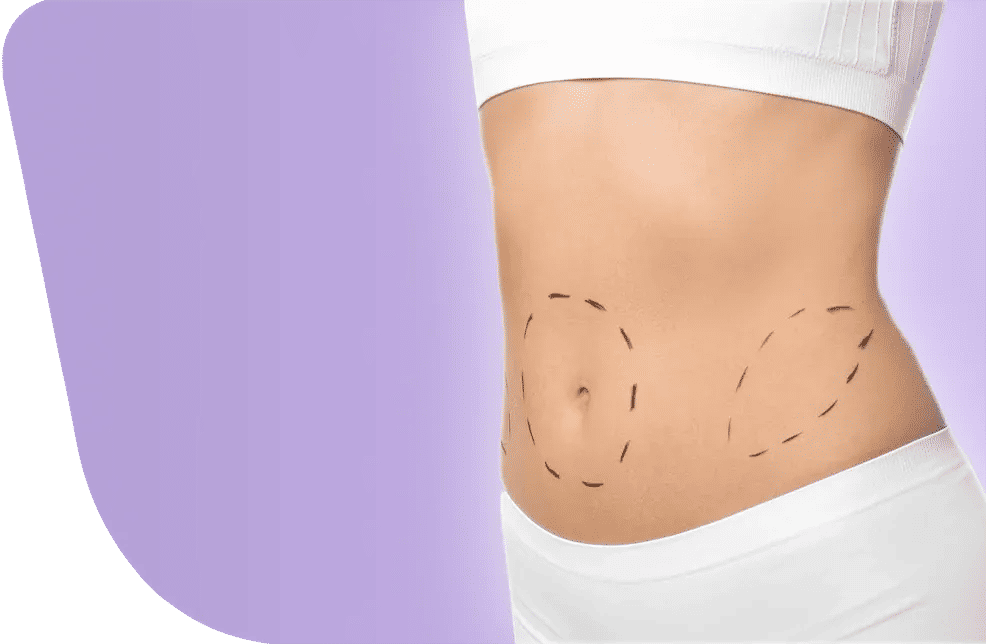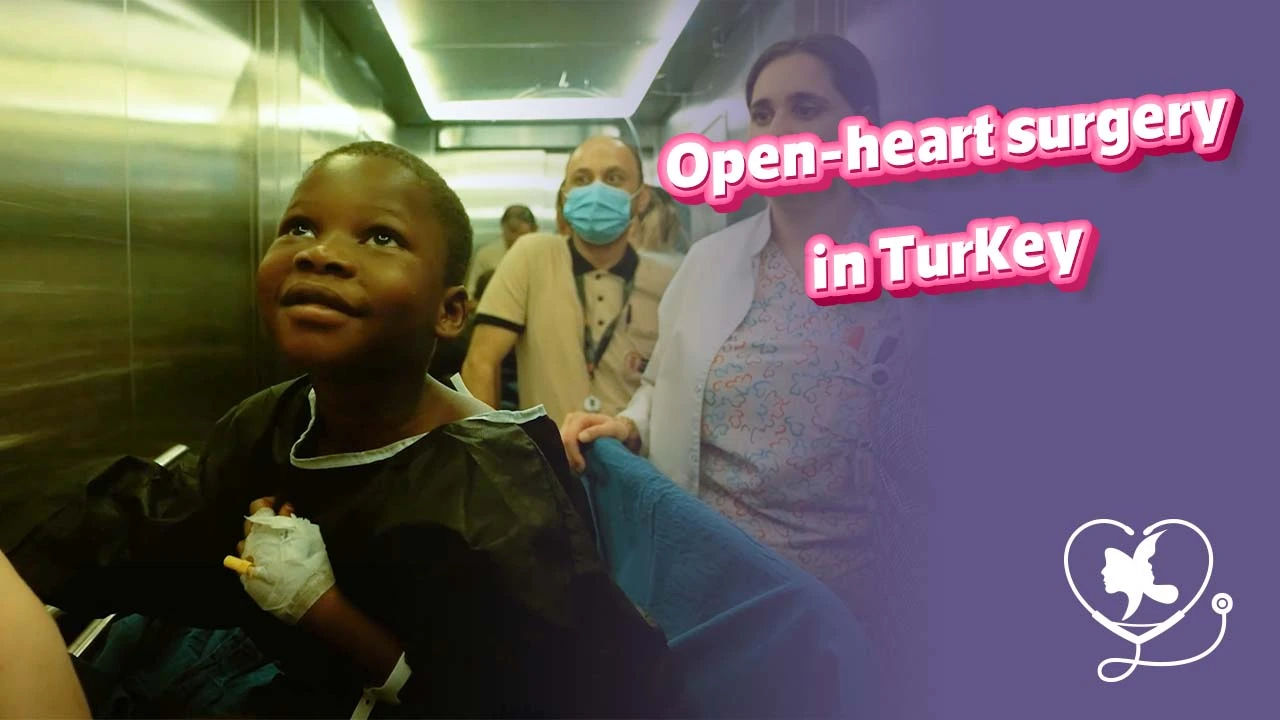- - What Happens to the Belly Button During a Tummy Tuck
- - Repositioning of the Belly Button During Tummy Tuck
- - New Belly Button Opening Is Created After a Tummy Tuck
- - What Does the Belly Button Look Like After Tummy Tuck Surgery?
- - Recovery Aftercare of Belly Button After Tummy Tuck
- - Risks and Complications of Belly Button in Tummy Tuck
- - Why Choose the Right Surgeon for Tummy Tuck?
- - Get a Tummy Tuck with a Perfect Belly Button at Turkey Luxury Clinics
- - FAQs About theTummy Tuck Belly Button
Tummy tuck is a sculpting surgery that tightens your loose skin in the abdomen, giving you a contoured, youthful, and harmonized body shape.
During a tummy tuck, also known as abdominoplasty, a surgeon makes incisions, removes excess skin and fat, tightens the abdominal muscles, and closes the wounds.
While the procedure mainly aims to create a flatter, smoother abdominal contour, it also requires careful handling of the belly button, a small but important feature that often raises questions about its post-surgery appearance.
Many patients wonder how the tummy tuck belly button looks.
Whether it will remain natural, or if it can be reshaped or reconstructed. Understanding these details helps set realistic expectations and ensures clear communication with your surgeon.
Discover with Turkey Luxury Clinics what happens to your belly button during a tummy tuck, what changes may occur, and how to achieve the most natural and attractive results.
What Happens to the Belly Button During a Tummy Tuck
During a tummy tuck, the belly button is not removed. Instead, it is carefully detached from the surrounding skin while remaining firmly attached to the abdominal wall by its natural “stalk.” After the skin is lifted and excess tissue is removed, the belly button is brought through a new opening created in the tightened skin.
This technique preserves its blood supply and structure, ensuring it sits in a natural, proportionate position on the newly contoured abdomen. The result may be a naturally restored belly button, a newly created one, or, if not performed accurately, a less natural-looking belly button.
Repositioning of the Belly Button During Tummy Tuck
The surgeon begins by making a controlled, circular incision around the belly button, following its natural outline. This incision goes only through the skin, never the deeper layers, so the belly button stays anchored to the abdominal wall through its original stalk, which contains the vessels that supply it with blood.
By gently separating the skin from the belly button in this precise way, the surgeon frees it from the overlying tissue while preserving all internal attachments.
This release allows the abdominal skin to be lifted and tightened smoothly without placing tension on the belly button. Importantly, the belly button is never removed; it is simply detached from the surrounding skin so it can be repositioned once the abdomen is reshaped.
After this step, the surgeon begins lifting and pulling the abdominal skin downward, removing excess skin and fat. This creates a flatter, more defined stomach contour. As the skin shifts, the original opening for the belly button no longer aligns naturally, which is why a new, carefully measured opening must be created for it.
New Belly Button Opening Is Created After a Tummy Tuck
During the reshaping of fat, muscles, and skin in the abdominal area, especially in procedures like a panniculectomy, the position of the belly button can shift significantly. In some cases, the belly button may become stretched, displaced, or even hidden due to the removal of large amounts of excess skin. When this happens, the surgeon must create a new opening to restore a natural or more aesthetically appealing belly button appearance.
Because the abdominal skin is pulled downward, the surgeon carefully marks and creates a small, precisely measured opening in the tightened skin for the belly button to be repositioned. This opening is designed to place the belly button in a natural, symmetrical location that complements the patient’s new abdominal contour.
This step requires a high level of accuracy. Proper positioning helps avoid an appearance that is too high, too low, off-center, or distorted. The final look depends on several factors, the shape of the opening, the depth created, and the way the edges are sutured.
Achieving a natural and realistic result relies heavily on the surgeon’s experience, technical skill, and artistic judgment. These fine details often distinguish a highly skilled plastic surgeon from others.
An unnatural-looking belly button can noticeably influence the final outcome of the surgery, making the abdomen appear less harmonious and the overall results less refined.
Once the skin is tightened, the belly button is repositioned in the new abdominal contour. In most cases, it is restored to a natural location and shape, blending seamlessly with the tightened skin.
This step ensures that the belly button looks natural and proportional to the newly contoured abdomen.
What Does the Belly Button Look Like After Tummy Tuck Surgery?
After a tummy tuck, the belly button will generally look more natural and proportional to the new, tighter abdomen, often appearing smaller and more sculpted.
Your surgeon keeps the belly button attached to the underlying abdominal wall, then creates a new opening in the repositioned skin for it to come through, hiding the incision within its new contours.
Repositioning of the Natural Belly Button
The belly button is gently brought through the new opening. Its edges are stitched into place with fine sutures to maintain shape, depth, and proportionality. The goal is a natural-looking, aesthetically pleasing belly button that complements the newly contoured abdomen.
Because the abdominal contour becomes flatter and more defined, the belly button often appears smaller, more refined, and more “youthful.” Many surgeons create a subtle oval shape with a slight natural “hooding” of skin at the top, which mimics the look of an untouched belly button.
Belly Button Reconstruction During Tummy Tuck
In some cases, the belly button may be damaged, missing, or severely distorted, either due to previous surgeries, injuries, or congenital conditions. In these situations, the surgeon performs reconstruction, creating a new belly button or fully restoring its structure.
This process ensures that the navel has a natural position, proper depth, and harmonious appearance with the newly contoured abdomen. Reconstruction is more complex than standard repositioning and requires advanced surgical skill to achieve both functional and aesthetic results.
Umbilicoplasty During Tummy Tuck
For patients who want a new belly button during their tummy tuck for a more attractive appearance, surgeons may perform umbilicoplasty, which is the cosmetic reshaping of the belly button.
This includes refining the size, shape, or depth, adding a subtle upper hood, or slightly adjusting the contour to make the navel appear more youthful and proportional to the tightened abdomen. Unlike reconstruction, umbilicoplasty is optional and purely aesthetic, typically done during the same tummy tuck procedure without the need for additional surgery.
Recovery Aftercare of Belly Button After Tummy Tuck
Immediately after surgery, the belly button may appear swollen or slightly puffed, which is normal. Over time, the swelling decreases, and the belly button gradually settles into its final shape. Recovery may take several weeks, with full results visible within 3 to 6 months.
Patients should follow post-operative care instructions carefully to prevent infection, minimize scarring, and ensure the belly button heals correctly.
Proper care of the belly button after a tummy tuck is essential for healing, minimizing complications, and ensuring the best aesthetic outcome. Immediately after surgery, the area may be swollen, slightly bruised, or appear puffed—this is normal.
Key aftercare steps include:
- Keep the area clean and dry: Gently cleanse the belly button with mild antiseptic solutions as instructed by your surgeon to prevent infection.
- Follow dressing instructions: Change bandages according to your surgeon’s guidance. Avoid tight clothing that may press against the belly button.
- Avoid strenuous activity: Heavy lifting, twisting, or intense exercise should be avoided for several weeks to prevent tension on the abdominal skin and sutures.
- Monitor for complications: Watch for signs of infection, unusual redness, persistent swelling, or abnormal discharge. Contact your surgeon immediately if any issues arise.
- Scar care: Once cleared by your surgeon, you can use recommended scar creams or silicone sheets to help minimize visible scarring and maintain a smooth appearance.
- Patience is key: The belly button may take several weeks to months to settle into its final shape. Swelling gradually subsides, and the navel will blend naturally with the tightened abdominal contour.
Read more about excess skin removing surgery and how to get rid of loose skin after weight loss
Risks and Complications of Belly Button in Tummy Tuck
Risks associated with the belly button in a tummy tuck include infection, poor healing, and unsatisfactory or distorted appearance. Complications can also lead to the loss of the belly button or an ugly scar.
Unnatural Belly Button
Sometimes, the belly button may look unnatural after a tummy tuck. This can happen if it’s placed too high, too low, or if the shape is distorted. Uneven edges, shallow depth, or improper “hooding” can make the navel stand out in a way that disrupts the overall abdominal harmony. Skilled surgeons adjust the size, shape, and placement during surgery to ensure the belly button looks natural and proportional to the tightened abdomen.
No Belly Button
In rare cases, patients may notice that the belly button appears absent after surgery, sometimes called the “no belly button” issue. This usually occurs due to excessive tension, poor incision placement, or complications affecting blood supply. When this happens, a secondary procedure or reconstruction can restore the navel, recreating its position, depth, and natural appearance. Choosing an experienced surgeon significantly reduces the risk of this complication.
Belly Button Scar After Tummy Tuck
A scar is inevitable after a tummy tuck, but skilled surgeons hide it within the natural folds and shadows of the belly button. Proper suturing and careful placement help the scar blend in, making it barely noticeable over time. Poor positioning or tension can lead to a wider or uneven scar, which may make the belly button look unnatural. With careful aftercare, most scars fade nicely, leaving a discreet and natural-looking navel.
Why Choose the Right Surgeon for Tummy Tuck?
The skill and experience of your surgeon are critical for optimal belly button results. When selecting a surgeon, search for their experience with belly button management during tummy tucks. Review before-and-after photos that specifically show belly button outcomes. and consider their ability to handle complex cases, including minor reshaping or full reconstruction if needed.
Choosing a qualified and experienced surgeon reduces the risk of complications and ensures a natural, aesthetically pleasing result.
Get a Tummy Tuck with a Perfect Belly Button at Turkey Luxury Clinics
If you’re considering a tummy tuck and want expert guidance on achieving a natural, beautiful belly button, our experienced surgeons can help. Schedule a consultation at Turkey Luxury Clinics today to discuss your options, see before-and-after results, and create a personalized surgical plan that meets your goals.
You may like:Is Body Sculpting Dangerous? Safety & Risks of Body Contouring












.webp)
.webp)
.webp)
.webp)

